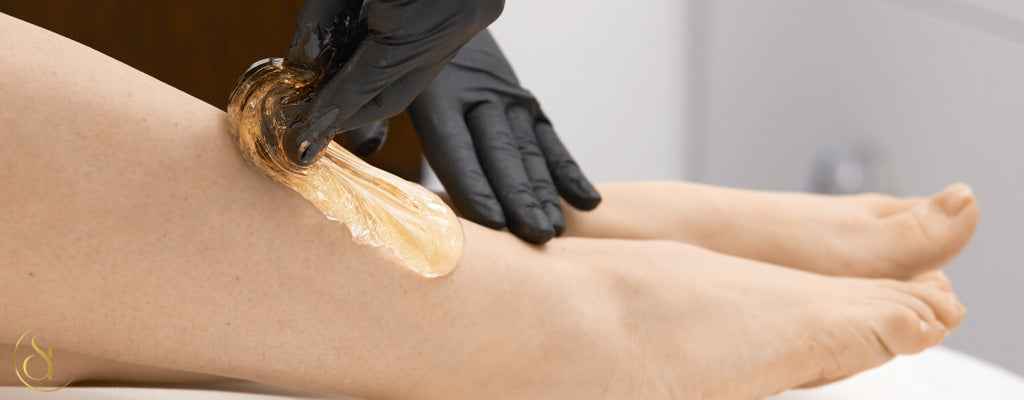Sugaring vs. Waxing: What’s the Difference and Which Is Right for You?
Posted by SUZANNE EGAN

Removing unwanted hair is personal — whether it’s for smooth aesthetics, hygiene, or pure comfort. Two of the most trusted professional methods are sugaring and waxing. While both remove hair from the root and offer longer-lasting results than shaving, they feel different, work differently, and can leave the skin in very different conditions.
In this guide, we’ll break down each method so you can decide what works best for your skin, lifestyle, or clients. For beauty professionals and students in advanced aesthetics, this isn’t optional knowledge — it’s essential.
Two Paths to Smooth Skin
Waxing has long been a salon staple. Using either soft or hard wax, the product is heated, applied to the skin, and quickly removed to pull out hair from the root. It’s efficient and, when performed correctly, highly effective.
Sugaring takes a gentler approach. The paste — made from natural ingredients like sugar, lemon, and water — is applied at a lower temperature and removed in the same direction that hair grows. The difference in application may be subtle, but skin can feel the results.
Ingredients Matter
For ingredient-conscious clients, the difference is huge.
Most waxes contain synthetic resins and additives to improve grip and performance. While effective, they can sometimes be too aggressive for sensitive skin — especially on the face, bikini, or underarms.
Sugaring products are typically food-grade, preservative-free, and simple. In fact, they’re so pure you could technically eat them (though we wouldn’t recommend it). Fewer ingredients mean less chance of irritation and a gentler overall treatment.

Technique in Motion
With waxing, the product is applied in the direction of hair growth and removed against it. This quick, opposing movement can place more stress on the follicles and surrounding skin.
Sugaring reverses the process: the paste is moulded against the hair’s natural direction and flicked away along its growth. This means less trauma to the skin, reduced redness, and less pulling on live skin cells — making it an ideal choice for sensitive skin or clients prone to ingrown hairs.
For professionals, sugaring often means fewer touch-ups, smoother regrowth, and a more comfortable experience for the client.
Temperature and Comfort
One of the biggest differences clients notice is heat. Wax needs to be hot enough to spread, which can cause discomfort for some — even with temperature checks.
Sugaring paste, on the other hand, is applied just above body temperature, making it safer for delicate areas and more comfortable for those sensitive to heat.
Hair Length and Timing
Waxing typically requires at least ¼ inch of hair growth, meaning you may need to wait several weeks between treatments.
Sugaring can remove hair as short as 1/16 of an inch. That means more frequent sessions, minimal visible regrowth, and consistently smooth results.
Post-Treatment Skin
Both methods remove hair from the root, but post-treatment reactions can vary.
Waxing may cause redness, swelling, or tenderness — especially on more delicate skin.
Sugaring is less likely to irritate because the paste adheres only to hair and dead skin cells, not live skin. This results in calmer, faster recovery.
Cleanup and Environmental Impact
Wax can be messy and often requires oils or special removers to clean up — not to mention the additional waste from strips and disposables.
Sugaring paste dissolves in water, making cleanup quick, chemical-free, and more environmentally friendly.
Cost and Efficiency for Professionals
Waxing often requires more materials: strips (for soft wax), pre- and post-wax products, and continuous temperature monitoring with a warmer.
Sugaring involves fewer tools, no strips, and less aftercare product. Once mastered, the process can be highly efficient, saving time and reducing supply costs.
What Clients Want Today
Today’s clients are more ingredient-conscious than ever, seeking treatments that feel safe, natural, and effective.
Sugaring aligns well with these values, but waxing still holds a loyal following — particularly among clients with coarser hair who are used to its results.
As a beauty professional, your role isn’t to choose for them, but to understand both methods and guide them toward the option that suits their skin, hair type, and comfort level.
Final Thoughts
In the sugaring vs waxing conversation, there’s no single “best” choice — only the right choice for the client. Both methods effectively remove hair from the root, but they differ in comfort, technique, and after-effects.
A skilled professional understands these differences and tailors the service accordingly. For students and professionals at Suzanne Egan Academy, mastering both methods is core knowledge — because great results aren’t about picking a side, they’re about picking what’s right for each person in your chair.


